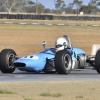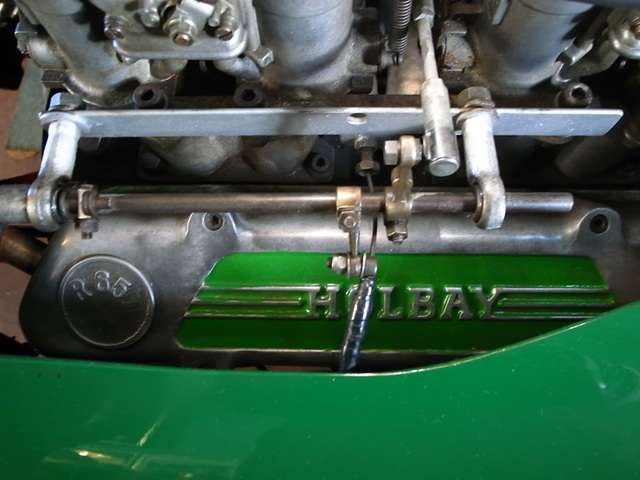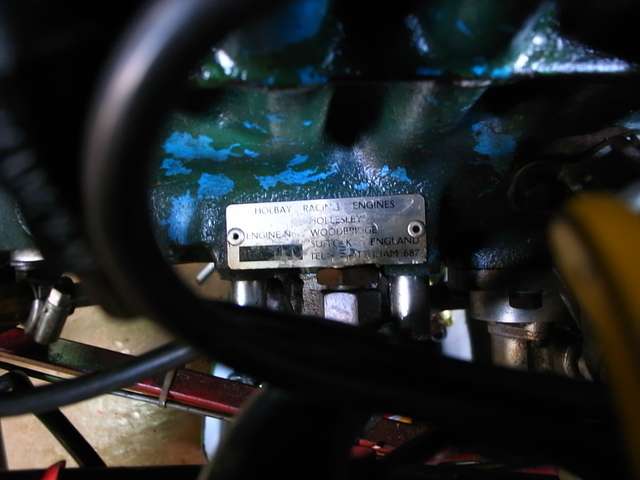hatrat, on Sep 14 2010, 07:11, said:
I have recently been in contact with an ex Holbay employee (1959 - 1963) in my quest for information on period Formula Junior heads. He advised the following :
"I worked for Holbay 1959 to 1963. During that period I have no recollection of Ford supplying special heads. We used to buy complete 105E engines from Ford and strip them down. We retained the standard block (bored out) and standard head castings with extensively re-worked ports with with larger valves".
It appears from this that at least in the period up to 1963 Holbay developed Ford race engines from new stock they obtained from Ford.
hatrat, do you reckon your ex Holbay contact is mates with any ex Holbay fellows from 63 to 66,67 or thereabouts?
The reason I'm harping on is that now I'm intrigued to learn to what extent Holbay used 105E blocks in conjunction with 116E/120E blocks when the five bearing ones became available. Or, did they cease using three bearing blocks at the end of the FJ era (or at some later stage and move soley to five bearing ones)? I'm working from a very small sample from 1965, but Dad's S65 and the R65 (dinky di F3 997cc engine in the article PS30-SB turned up) both apparently 1965 vintage engines, both definitely employed five bearing blocks, one small bore, the other large bore. I suppose it depends what type of racing engines (or, rather, how many racing types) they were trying to cover. I keep forgetting to take account of saloon car racing when thinking about these things........
For their Sports Racing S65 engine, they had a 105E head, downdrafted, on the 120E block, I suspect, 1) because they could with SRC rules/regs & 2) cause an Anglia head allowed for little combustion chambers on a small capacity engine that therefore allowed them to get the compression ratio they needed.
So, a bit more scratching around has revealed another period commentary on Ford's engines of the period, this time in Autocar, 7 January, 1966 where Sports Editor, Peter Garnier on page 37 in his "The Sport" column. It doesn't shed any light on what block types Holbay were using, but it does give Holbay a bit of a chuck on the shoulder and feeds my bias in their favour!!!
"British Saloon car Championship , ...being run to Group 5, works supported teams of Cortinas and Anglias will take part. In the 1000cc class two Anglias entered by Broadspeed, with engines modified by Cosworth, will be driven by John Fitzpatrick and Peter Procter. In the up to 1300cc class, two 1200 cc Anglias, prepared by John Young of Superspeed Conversions, will be driven by Mike Young and Chris Craft.
Team Lotus, with Jim Clark, Jack Sears and Peter Arundell, will run two Group 5 Cortina Lotuses in the Championship races. Because Group 5 allows so many more modifications - in fact you can do pretty well anything you like provided you don't increase the capacity above the top limit of the class into which the engine originally fell, and don't change the camshaft(s) position - the engines will be specially prepared by BRM. They will have dry sump lubrication, and a new Lucas fuel injection system......
Added to all this, there are Ford's formula 2 and 3 acivities. Dominating formula 2 since its early beginnings, the Cosworth Type SCA engine, based on the Ford 1500cc, 5-main bearing block, is now producing more power since it has been fitted with fuel injection ( the Edward Eves article, Cosworth SCA 65 in Autocar 16 April 1965 has customer engines equipment as two Weber 40 DCM2 carburettors with 32 mm chokes) and is being used by several of the main contenders during 1966......
In formula 3, Holbay and Cosworth prepared Ford units have swept the board.
Finally, Ford say that Cosworth Engineering, in conjunction with Ford of Britain, are well advanced with their programme for a new formula 2 unit (for the new formula 2) as well as the formula 1 engine recently announced...." (and we all know where those two power plants went).
Anyway, the point of my reproduction of all that is that it's nice to see Holbay mentioned in their "niche" in the same breath as the colossus of Cosworth on an equal footing as far as F3 is concerned. Peter Garnier's point was that Ford rate the publicity of competition success very highly and pity the fact that other manufacurers didn't feel the same way............
Makes me wonder in these engines, how big an issue bearing drag was/is versus valve train integrity/valve spring rates/breathing in general and whether or not Holbay spent just many, or many, many hours on different camshaft variations......
Is Laurence 'Slim' Coe still with us?
If your Holbay contact was prepared to comment on the blocks and even the Anglia head on five bearing block theory I'd be all ears!!!
Cheers
James
Edited by SJ Lambert, 27 September 2010 - 12:49.




































